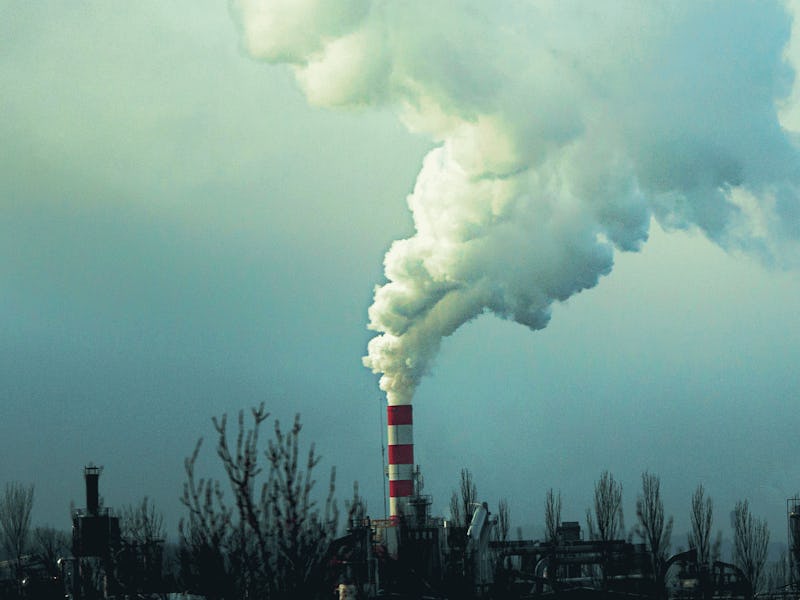A woeful prediction: Air pollution levels will remain constant in the '20s
Continued innovation and funding are going to be needed to curb CO2 emissions.

Our planet is in danger, and the past decade has done little to save it.
While the last ten years have seen increasing awareness, activism, and renewable technology developments, global CO2 emissions levels continued to rise, and nations around the world are not yet on track to meet their emissions goals as stated in the 2015 Paris climate accords.
This is #16 on Inverse’s 20 predictions for the 2020s.
As reported by the New York Times, a U.N. report released at the end of November found that “deeper and faster cuts will be required” in order to keep the Earth’s warming from rising above the 1.5 Celsius above pre-industrial levels — the threshold identified as the point at which environmental damage becomes irreversible.
According to projections from 2018 data, current emissions trends could reach 1.5 Celsius in just 15 years, or roughly at the end of 2034. The U.N. report also found that in order to stay safely below the 1.5 C threshold, the next decade will need to see annual emissions levels decreases of at least 7.6 percent, which would be a stark difference from the 2 percent rise in emissions experienced in 2018.
Inverse predicts that meeting these emissions goals in the next decade could be possible, but that it will take not only vocal activism, but continued innovation and funding as well.
It’s simple enough to say that switching to renewable energy or halting deforestation could help lower emissions, but, as the past decade and beyond have shown us, industry is not necessarily willing to do so if their bottom line could be in jeopardy. Renewables like wind and solar have already seen an increase in efficiency and economic value in recent years, and its this kind of continued focus on innovation that can really start to shift an entire system toward more sustainable actions.
However, while we predict that we’re probably (hopefully) reach our global emissions goals by this 2030 deadline, Inverse predicts that the progress won’t be linear.
Based on 2018 and estimated 2019 values, it doesn’t seem likely that 2020 will immediately hit the 7.6 percent mark laid out by the U.N., but as shifts in industry and public opinion continue to change in years to come it might be possible for those levels to be hit and even exceeded in order to reach the 2030 deadline.
These actions will be necessary not only to protect our planet’s environment and wildlife but because it will be developing countries least responsible for the damage who will feel the brunt of its effects.
As 2019 draws to a close, Inverse is looking to the future. These are our 20 predictions for science and technology for the 2020s. Some are terrifying, some are fascinating, and others we can barely wait for. This has been #16. Read a related story here.